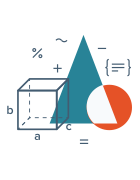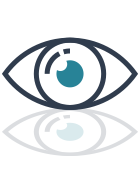RESOURCES
A crucial part of learning is taking time to reflect on our experiences. Through reflection, we can step back and consider what we learned, how we learned it, and how to apply the knowledge to future learning experiences. As we reflect regularly, we begin to identify patterns in the way we learn. This information can be used to develop personal learning frameworks and become better learners.

Create a Habit
In a busy world, finding time to reflect can take commitment. The best way to commit is to develop a habit. A habit is something you eventually do without thinking about it. You just do it. To create a reflection habit, start with identifying a specific time every day, set an alarm, and reward yourself after reflecting.

Use a Formula
A search on the Internet will produce many different formulas for reflection. At the heart of all the models is experiencing something, recording your thoughts and feelings, determining what is essential, and deciding what you will do with that information moving forward. With ongoing reflection, patterns will emerge, and learning will improve.

Try Different Mediums
The traditional model for reflection is a written diary. While writing is still a great way to reflect, don’t feel limited. Draw, create mind-maps, take pictures, record video and audio. The key is to capture your ideas and thoughts so you can take a more in-depth look. Even if you settle in on a primary medium, don’t be afraid to shake it up every once in a while.

Reflect During and After
There are two views of reflection, and both have their role in learning. The first is “reflection-in-action, “ where you have short reflection cycles during an experience. This allows you to make subtle adjustments and course corrections. The second is “reflection-on-action,” where you take time after an experience and consider what was learned, how you learned it, and what you will do with the new knowledge.

Experience, Think, and Feel
To make the most of reflection, you need to be open and focused during your experiences. As you participate in activities, try to be fully immersed and “take it all in.” Be aware of what you are thinking and feeling during the experience, capture this information, and use it for reflection.

Share Your Thoughts
While reflection is typically seen as a solitary and private pursuit, there is great value sharing your reflections. By making your thoughts visible through writing or video with a trusted community, you can get multiple perspectives. These outside views can often help you see experiences through a different lens and discover new meaning.
